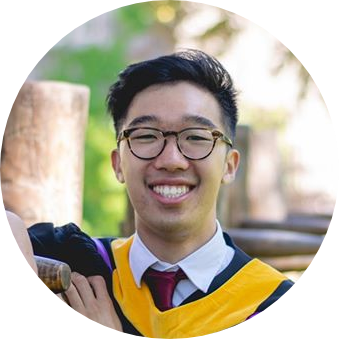What if I told you that you could be your own ‘anxiety pill’?
Self-management of anxiety in a stressful world
Disclaimer: I am not a physician and this is not medical advice. It is just what I learned from a recent (virtual) psychiatry lecture. Please contact your family physician if you need medical care, this includes anything to do with mental illness.
Photo by Aliaksei Lepik on Unsplash
We had a lecture recently from Dr. Jon Davine, a dual psychiatry and family medicine trained physician. The talk was about anxiety disorders, which I wasn’t too familiar with before if I’m being honest. Anxiety disorders are defined by the DSM-V (sort of the diagnostic catalogue of mental illness) as “disorders that share features of excessive fear and anxiety and related behavioural disturbances.”
What distinguishes an anxiety disorder from “normal” anxiety?
- Persistent. >6 months as opposed to stress-induced transient anxiety, for example tax season for an accountant or having to give a presentation in front of people.
- Impairing social or occupational function. The anxiety is interfering with your ability to maintain social relationships and/or perform at work. This is often due to avoidance behaviour.
These factors are important to clarify. Dr. Davine emphasized that we don’t necessarily want to “over-psychiatrize” everyone. Sure, you can have certain anxious personalities, but if it isn’t disrupting your life to the point of not being able to function, then you don’t need to be treated. We are “allowed” to be anxious sometimes.
That being said, many people do have anxiety disorders—the lifetime prevalence (percentage of people who have it at least once in their life) is 31%, and the 12-month prevalence is 18%. Many people are unfortunately undiagnosed and untreated, when in fact things like cognitive behaviour therapy and/or medication can really help restore quality of life, and even prevent suicide attempts.
How do you know if you have anxiety disorder?
The general screening questions go something like this:
In the past 2 weeks, how much have you been bothered by:
- feeling nervous, anxious, frightened, worried, or on edge?
- feeling panic or being frightened
- avoiding situations that make you anxious?
There are many anxiety and anxiety-related disorders, but the main/most common ones include panic disorder, agoraphobia and other specific phobias, social anxiety disorder, generalized anxiety disorder (GAD), obsessive-compulsive disorder (OCD), and post-traumatic stress disorder (PTSD).
There are certain specific questions that are also asked. For panic disorder, it’s important to know whether the panic attacks occur “out of the blue”. For OCD, whether the patient has been bothered by repeats and unwanted thoughts and compulsions. For PTSD, whether the patient has experienced a traumatic event (including unexpected death of a loved one) and has been re-experiencing it in disturbing ways.
Importantly, we need to make sure that the anxiety is not caused by drugs/medications, another mental disorder (although often times patients with anxiety disorders have multiple anxiety disorders, as well as depression and substance use disorder), or an underlying medical condition. Panic disorder is sometimes known as “the great imitator” because the symptoms of a panic attack (shortness of breath, chest palpitations/chest pain, lightheadedness, dizziness, vomiting and nausea) are the same symptoms for a heart attack, which is a medical emergency.
Risk factors for anxiety include family or personal history of anxiety, stressful life events, childhood abuse, loneliness, low education, adverse parenting, chronic medical illnesses, and female sex.
For a more detailed online anxiety screening tool, see this website created by the BC Partners for Mental Health and Substance Use Information.
What are the treatments for Anxiety Disorders?
Now here’s the neat part.
The first thing Dr. Davine does for a patient presenting with a possible anxiety disorder is to counsel them to stop taking caffeine, alcohol, and marijuana. “More often than not,” he says, “that’s all they need.”
The next thing is talking to the patient about their fears and worries. Employing a technique called “Cognitive Behavioural Therapy” by trying to correct any cognitive distortions (for example reassuring them that anxiety is common and no one has died from it) and reinforce positive behaviours to allow the patient to slowly face their fears. For example, for a patient who has agoraphobia or feels anxious if they leave their house to the point of being housebound, a progressive “hierarchy” of steps can be agreed upon between the doctor and the patient. The doctor might suggest the patient just put their hand on the doorknob of the front door as the first step, and then opening the door and standing there, and then walking to the end of the driveway, and then challenging them to walk across the street, and so on. Sometimes this process of “systemic desensitization” can be empowered by quick-acting medications like benzodiazepines, for the patient to have in their back pocket “just in case”.
The other thing Dr. Davine suggests for anxious patients is to look up progressive muscle relaxation videos on YouTube, and to do it at least twice a day. This was fascinating because it’s not quite what you expect medical doctors to prescribe. This is very similar to the “body sweep” in mindfulness meditation, which has been shown by evidence to be associated with less emotional distress, more positive states of mind, and better quality of life. Dr. Davine emphasized the need to incorporate this relaxation technique into the patient’s daily routine so that it becomes a part of their lifestyle, even when the patient is not experiencing symptoms. That way, the mind will learn a new coping strategy to become the patient’s own “anxiety pill”, and will lessen anxiety symptoms when they do occur.
This strategy can apply to anyone, anxiety disorder or not. Personally I’ve been meditating with the Ten Percent Happier app (not an ad) for about a month and a half now, and 1260 “mindful minutes” later, I can definitely say I’m at least 5% happier aha. So many of us go through life mindlessly scrolling through social media, television, porn. Mindfulness teaches us that the mind can be trained, just like a muscle, to become more mindful—in fact, at the end of the almost every session, the instructor says “thank you for your practice”. It’s a practice, something you can get better and better at. It can clear up some of the brain fog that can hinder our motivation and start to rewire our brains to build better habits. It can clear our cluttered thoughts, of what we’re going to eat or wear or do next or do tomorrow or do the next day, and pull you back down to being in the moment. “Sit and know that you are sitting.” And finally, it’s forgiving. It’s expected and normal for thoughts to pop up and distract us during meditation—sometimes even great ideas can arise when you clear your mind of clutter, such as the idea to write this article! “When that happens, just find your breath, and begin again.” Whether it’s with YouTube videos or through one of the guided meditation apps out there, incorporating meditation into your life is extremely valuable and a way to have your own “anxiety pill”, for not if, but when life inevitably becomes stressful.
Back to the treatments for anxiety disorder. If psychotherapy, CBT, and progressive muscle relaxation don’t help after a few weeks, then the next step would be pharmacotherapy. Research shows that psychotherapy and pharmacotherapy are equally effective, but different options may work for different people. The first-line medications are usually drugs called SSRI antidepressants, which are not addictive and have minimal side effects (most commonly weight gain and sexual dysfunction), and these are usually prescribed for around a year after titrating to the correct dosage. Many patients take these and find that they can regain normal function — talk to your doctor if you want to learn more.
The information presented here is based on the notes I made from lecture, the DSM-V, and the Canadian clinical practice guidelines for the management of anxiety, posttraumatic stress and obsessive-compulsive disorders. Hopefully it was interesting to read, and maybe encouraged you to use the online screening tool or to consider incorporating some mindfulness and muscle relaxation techniques into your own life.

